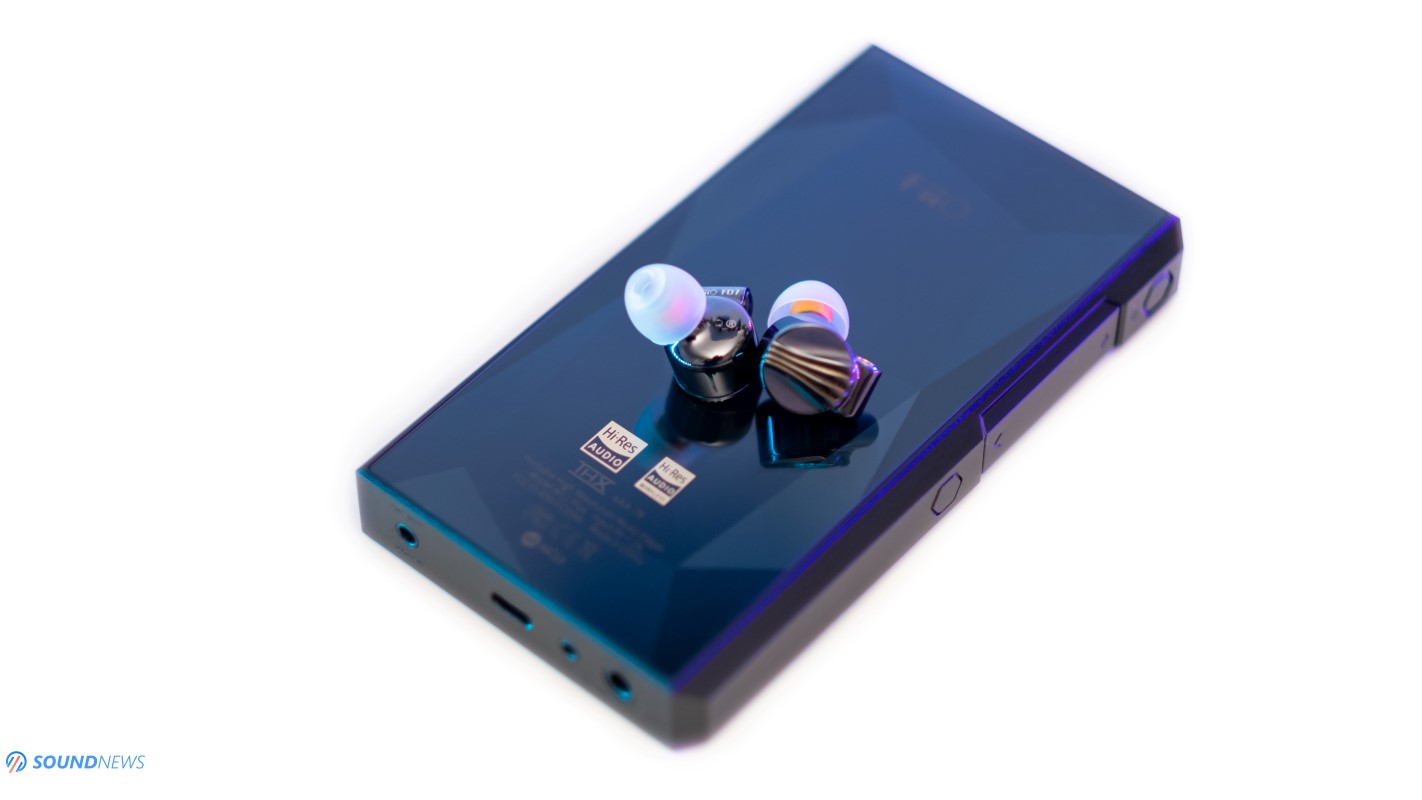FiiO FD7 IEM Review – Going All Beryllium
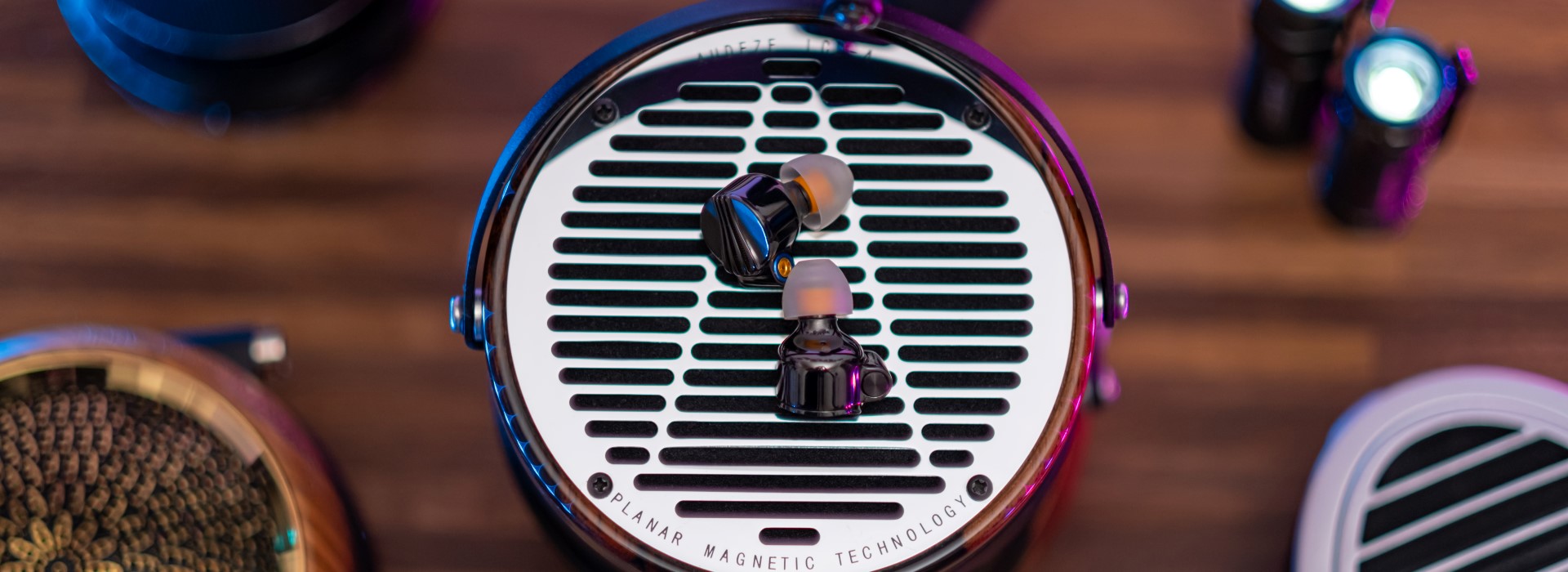
My Video Review:
Let me give you a little inside information about FiiO. They never rest on laurus nobilis leaves, they never compromise, never settle or slow down innovation. It’s one of those stubborn companies that are pushing the envelope on a daily basis. Every month, a new IEM, portable DAP, DAC/Amp or Bluetooth gizmo is seeing the light of the day, covering every single corner of portable audio, striving to achieve a good balance between performance and price.
When it comes to flagship IEMs, FiiO adopted a Tick-Tock model, keeping a high interest for all their IEM categories and instead of shrinking their size year after year, FiiO is making them bigger, better, stuffing them with extra goodies. In 2018 the spotlights were moved to their hybrid FH5, in 2019 the focus points were put on an all-armature FA7 and then on their FH7 hybrids – that are still my daily driver IEMs. Last year they focused their attention on their best all-armature FA9 and 2021 seems like another flagship year, as their best single driver FD7 were just released and their upcoming FH9 are around the corner, being revealed as I am typing this. While they already have a strong IEM portfolio, covering multiple price points for all-armature and hybrid IEMs, single driver dynamic headphones are still unexplored territory to them. They tried murky waters with beryllium coated drivers on FD5, but this time around we’re talking about a pure beryllium diaphragm, that should uplift their technicalities to the next level.
As usual, a higher model number suggests a longer R&D, a newer tech under its belt and a cooler set of accessories. FiiO went with an attractive price point of $599.99 for their flagship single driver IEM and I’m really curious how they stack-up against their own FH7 genre masters that I’m using for more than a year now. Some detailed measurements will follow shortly, but until that happens, let’s unbox them, check them out and listen to a lot of music.
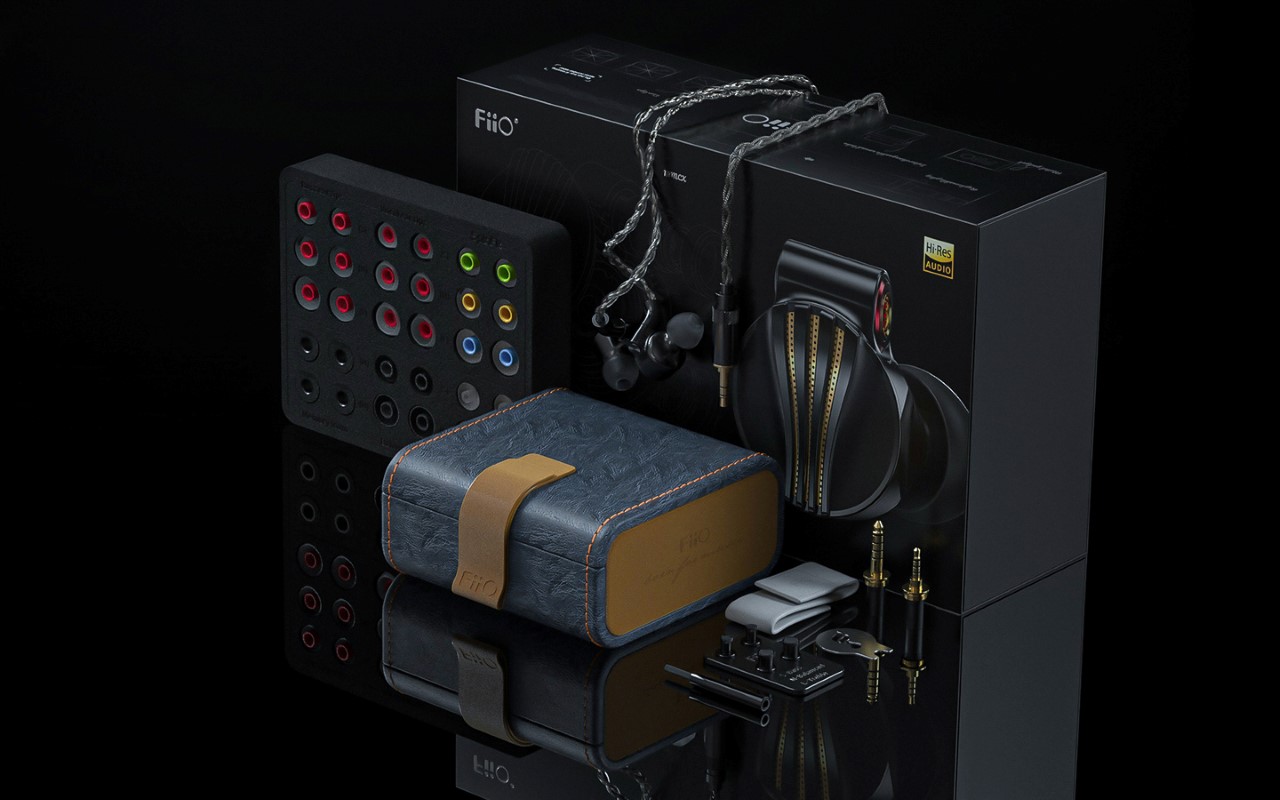
Unboxing Experience
FD7 are currently their best dynamic IEMs and as with all top gear, FiiO prepared an outstanding unboxing experience that is reminding of their best IEMs. Double boxed isn’t a luxury anymore, but a norm in the Hi-Fi business, exactly as it should. The smallest matte-black box is quite thick, surrounded by two layers of foam as extra protection measures. On the left you’re greeted with the IEMs themselves, with 2 pairs of sound tubes that will be altering their voicing and on the right you can see a beautiful leather-case. This is by far the best leather case FiiO came up with, it has removable dividers and it’s surrounded by a soft velvety material. In case you’ll want another one, FiiO is selling it separately, check for FiiO HB5 on their AliExpress store or ask your nearest FiiO reseller for one.
After lifting the first layer of foam, another floor is being revealed, home to the rest of the accessories. On the right you can spot a cleaning brush, a pair of interchangeable sound tubes, a yellow MMCX clip that will help you remove the cable much easier and two interchangeable headphone jacks: a 2.5mm balanced and a 4.4mm balanced one. FiiO killed three birds with one stone, as the included cable has 3 interchangeable audio jacks and that is probably the best idea they came up with.
FD7 seems to be holding a Guinness World Record for the number of ear-tips being provided in the package, just look at those yummy little buggers screaming to be inserted inside your ears.
They have a total 16 pairs of ear-tips split into 6 categories, as follows:
- Bass ear-tips (3 pairs of S, M and L – the grey silicone ones with a red inner tube). Self-explanatory, are you a bass-head? These will rock your world.
- Vocal ear-tips (3 pairs of S, M and L – the white silicone ones with red inner tubes). These are boosting the midrange presence, pushing all those voices closer to the listener.
- SpinFit ear-tips (3 pairs of S, M and L – the colorful ones) These are easily some of the most comfortable ones and some of the nicest sounding
- Memory foam tips (2 pairs in M size only – the black foam sticky ones). These are my favorite ear-tips. I find them very comfortable; they leak less compared to others, resulting in a better bass delivery.
- Balanced ear-tips (3 pairs of S, M and L – the standard black silicone ones). These don’t sound bad at all, but these aren’t offering a proper seal for me, delivering a gentler rumble down low. I wouldn’t use these.
- Tri-Flange ear tips (2 pairs of S and L – the longest white silicone ones) Etymotic users know them very well. They should be inserted deeper for a better seal. These are the only ones that will work with their red sound tubes.
An impressive packaging no doubt, but even more impressive was seeing the number of accessories laying inside. FD7 is covering all my needs and some more, including 4.4mm and 2.5mm balanced connections.
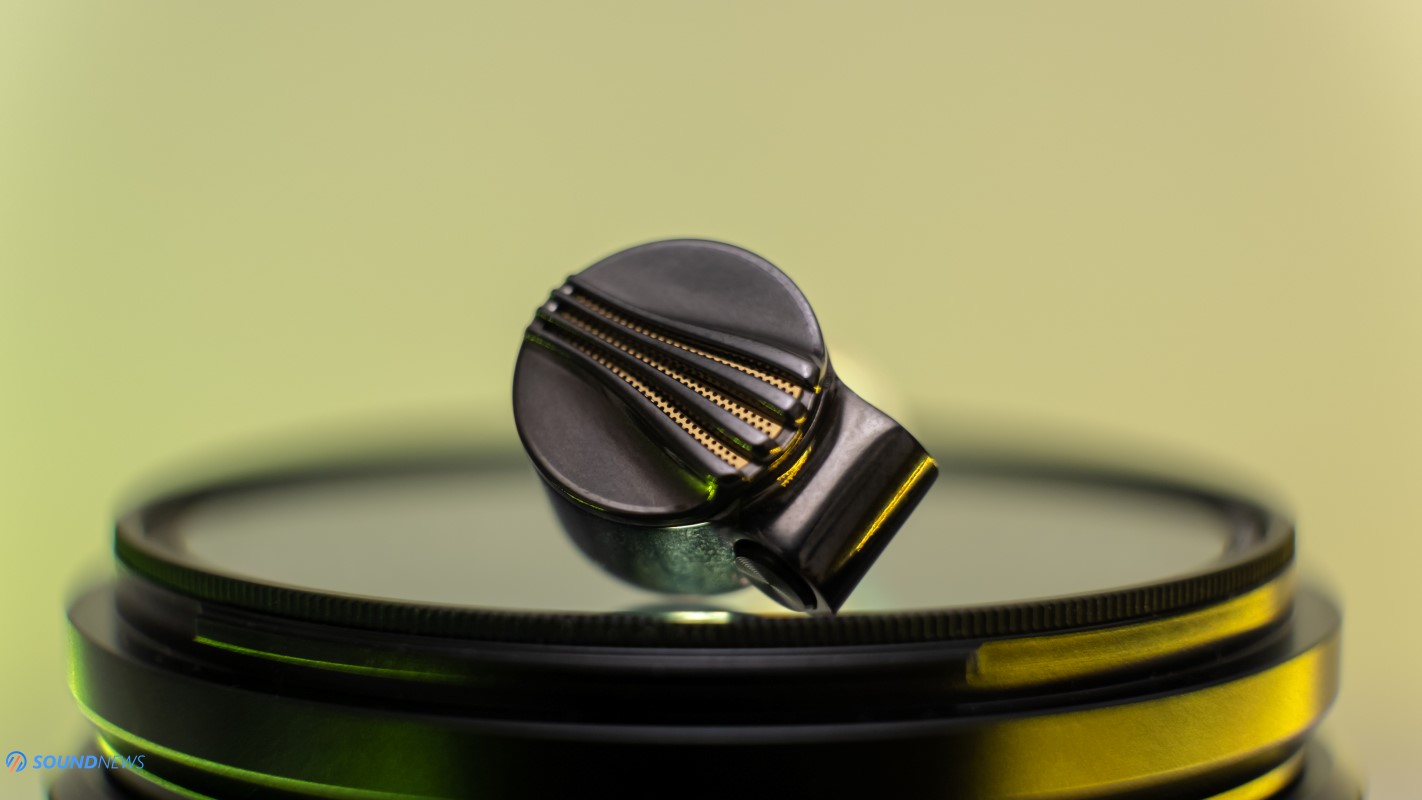
Design & Build Quality
FD7 looks exactly like a FD5, exchanging a raw stainless-steel look with a glossy black paint…and that is pretty much it. Looks is always a very subjective thing, but in my opinion, these are one of the best-looking IEMs FiiO released of late. Its shell is made out of stainless steel, it’s a little heavier than any other IEM FiiO released so far. It is 3 times heavier than FD1 and 2 times heavier than FA7, but I really like the added weight as it gives some confidence and an impression of a high-quality product. I have another hobby collecting EDC (Every Day Carry) flashlights, small and heavy ones are always the rarest and the coolest ones to collect and somehow FD7 are reminding me about them.
FD7 are looking flawless to me, they even laser engraved its model number which looks pretty cool. FD7 is a semi-open design and if you would closely inspect the outer cover, you can spot some tiny holes in it, so that the excess air behind the driver would move outside, lowering distortion and increasing the perception of air in your music. The IEM shell have a small hole in it as well, that will remove the air pressure between your ear canal and the IEM body, for a much better comfort long term. The stock nozzle has a length and a diameter of around ~5mm, so you can easily use your growing ear tip collection, not only those found in the package. I personally tested several Spin-Fit and Comply foam tips and they all worked nicely together.
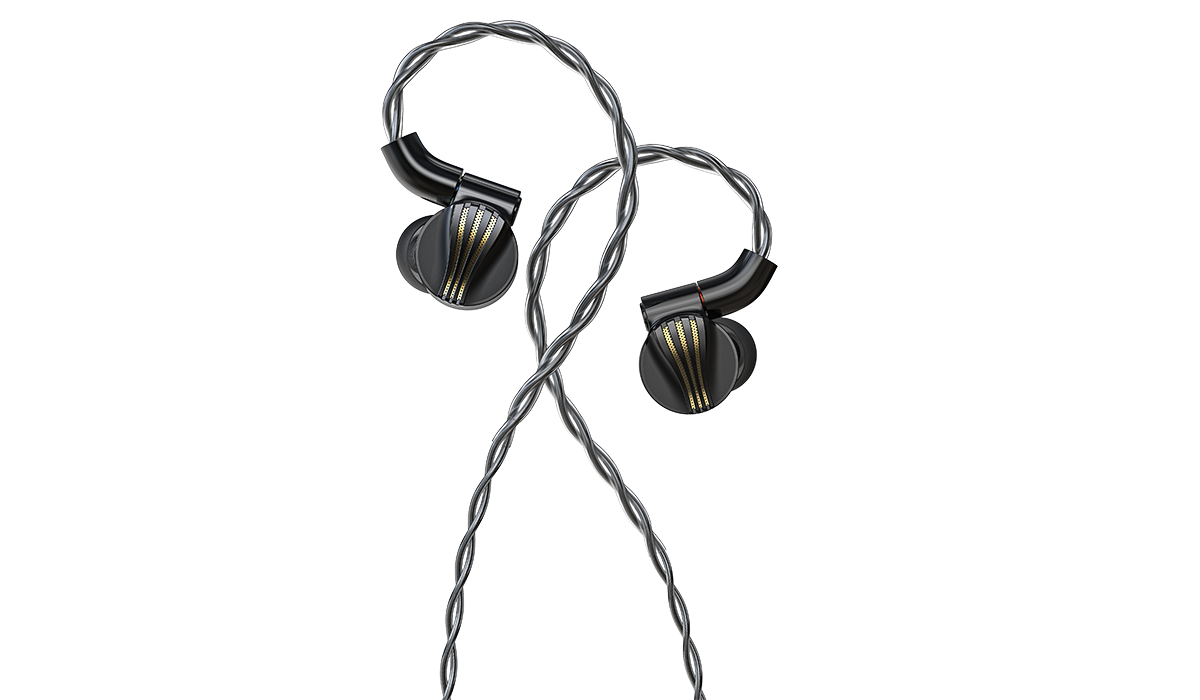
Cable Quality
FD7 is using a nice detachable cable, it’s very flexible, it doesn’t have microphonics and seems to be really well made. Considering that FiiO is offering three interchangeable headphone jacks covering all your needs, I really don’t see the point of buying separately a better headphone cable.
The cable uses 224 high-purity mono-crystalline pure silver wires, 4 strands with a thickness of 24 AWG and the cable itself is 18 AWB – it’s quite thick actually. Yes, pure silver wires, this looks like next get and the last cable you’ll ever need.
It uses MMCX connectors and in all seriousness, I never experienced a stronger MMCX bond with a headphone, its rock solid with FD7 and with my bare hands I cannot detach the cable. It is a whole lot stronger compared to FH7 and FA9 and if you are playing with third party cables on a regular basis, you should carry that MMCX assist tool with you at all times, it’s a huge problem solver.
Exchanging its headphone jacks seems like a super easy job to do, just unscrew their metal shell and pull by the cable until it’s out. Insert your desired jack aligning those 4-pins, screw back its shell and it’s a done deal.
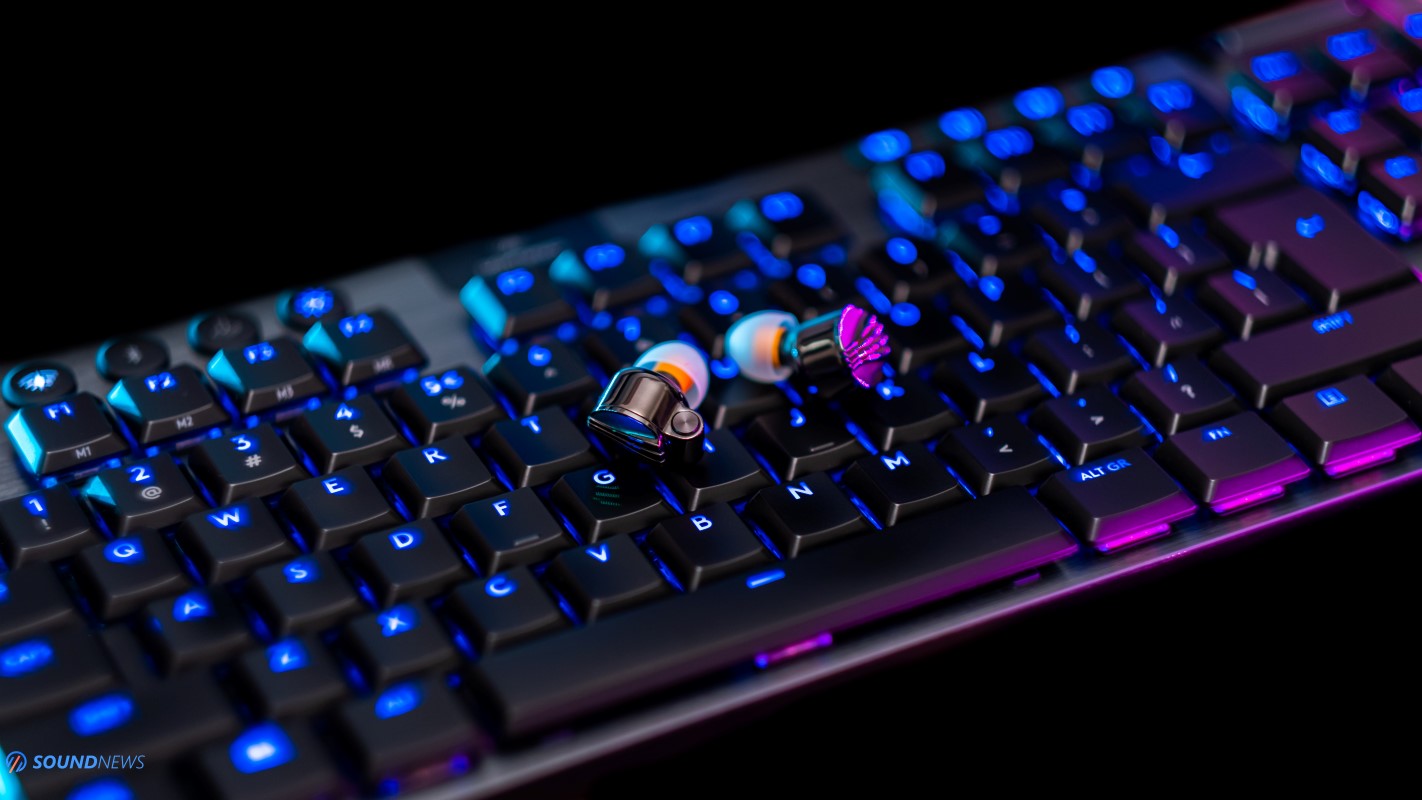
Tech Inside FD5
While FD5 had a Beryllium-coated driver, FD7 uses a pure Beryllium diaphragm per side. Yes, just one, but it’s a big one. With a diameter of 12 mm and helped by powerful N52 Neodymium magnets, FD7 achieved a staggering magnetic flux of 1.5 Tesla for a speedy bass delivery and for clear undistorted trebles. The same magnetic flux can be also found in top-of-the-line desktop headphones as Audeze LCD-4, Beyerdynamic T1, Fostex TH909 and many others.
It was important designing a lightweight but extremely rigid diaphragm and this is where Beryllium came to the rescue that is widely used by the high-end industry. FiiO uses it in their high-end IEMs, Focal in their high-end headphones and loudspeakers. Paradigm, Yamaha, Magico, TAD and Bowers & Wilkins are all high-end loudspeaker makers that are coating their drivers with Beryllium, since it’s super-light and extremely rigid.
Interchangeable sound tubes seem to be back, three pairs are being offered, the stock one uses black O-rings, except for the stock ones, the green and red sound tubes will be altering their frequency response, I will be measuring all three variations and will report back in the latest stages of this review.
Close to its pure beryllium driver, an acoustic prism system addresses some issues that come with time delay in between sound waves. This acoustic prism precisely controls the way sound waves travel through the FD7 to enhance treble propagation, ensuring an accurate audio phase.
Having a single driver in there, means that a passive crossover was completely bypassed, fully preserving the signal in its purest form possible. FD7 has an impedance of 50 Ohms and a super high sensitivity of 111 dB per 1mW of power, suggesting that these are extremely easy to drive. Most portable audio sources shouldn’t have issues driving them at very loud levels, but I’ll test that out soon and will report back.

Sound Performance
I. Preliminary Sound Impressions
The moment FiiO no longer mentioned the boring sounding Harman Target Curve in their marketing material of FD7, I already knew that FD7 is going to be what FD5 never was. As a small detour from this review, your should know that Harman made their curve with the help of regular people like you and me, it wasn’t made with the help of pure-hearted audiophiles and that my friends is a very big difference. Can you guess which parts of the frequency response will impress the usual folks that aren’t listening to music as often? That’s right! It’s bass and treble. Applying such a thinking for your audiophile-grade IEMs or headphones hurts the tonal balance more than anything else, because most of the sounds that are surrounding us in real life are happening in the midrange. We human beings have limited hearing abilities, especially in the upper parts of the frequency spectrum, thus focusing our attention mainly on the midrange section and if that region is lowered down on purpose, everything will sound fake, thin or emotionless and that is exactly what’s happening with headphones and IEMs that are targeting the Harman Curve. Give me midrange presence anytime of the day over that bass and treble emphasis and I’ll be happy. FD7 are already going into the right direction as I no longer see those crazy looking Harman curves and I have higher hopes for FD7.
When FiiO replaced a beryllium coated diaphragm on FD5 with a full-beryllium-jacket on FD7, things went into a different direction, especially when it comes to tonality/timbre. If you ever listened to a beryllium-loaded loudspeaker (like those of Revel, Bowers & Wilkins, Focal or others) or beryllium loaded headphones of Focal, you should remember their natural timbre that better controls treble shimmer and vibrations compared to paper-based drivers and I’m getting absolutely the same vibe out of FD7. Detail retrieval and transparency improved quite a lot versus FD5, thanks Odin their sound staging capabilities remained intact as FD5 was already a soundstage king in many ways, but the absolute biggest jump in sound quality is that FD7 is no longer bright and harsh sounding up top, while retaining all its glitter and shimmering.
FD7 are choosing a natural tonality and while their trebles went down, everything else went up and I can easier focus on all those bass and midrange notes appearing out of thin air around me. These are simply the most natural sounding FiiO IEMs to date and I have no doubts about that. They seem considerably smoother and more organic sounding to their FA and FH series, bringing some of that smoothness and easiness that I’ve experienced from their EM5 earbuds. It’s shocking at first hearing so many inner-details and small nuances from a single 12mm driver, but it seems that it does an exemplary job of covering our hearing abilities in full, there is bass definition, it easily goes down to sub-sonic levels, midrange is now fuller and considerably more organic sounding than before and trebles seem crisp and clear, without being harsh and fatiguing long term. FiiO FD7 is one of those IEMs that are putting everything on a plate, without trying to steal your attention with anything in particular. They will not impress in the first minutes, but as you listen to more and more music, they start reminding about top-class headphones that are technical, yet musical and engaging.
FD7 is also one of the few IEMs that aren’t sounding inside your skull, but more like a few centimeters (inches?) away from your head. These aren’t exactly 100% closed IEMs as sounds behind the drivers are going outside and you can still hear some chat and the usual noise around you, but all that was mandatory in achieving an out of head experience. FD7 are easily the biggest sounding IEMs I’ve heard from FiiO, these are on the same level with FD5 and considerably bigger than anything else, even compared to my daily drivers FH7 hybrids.
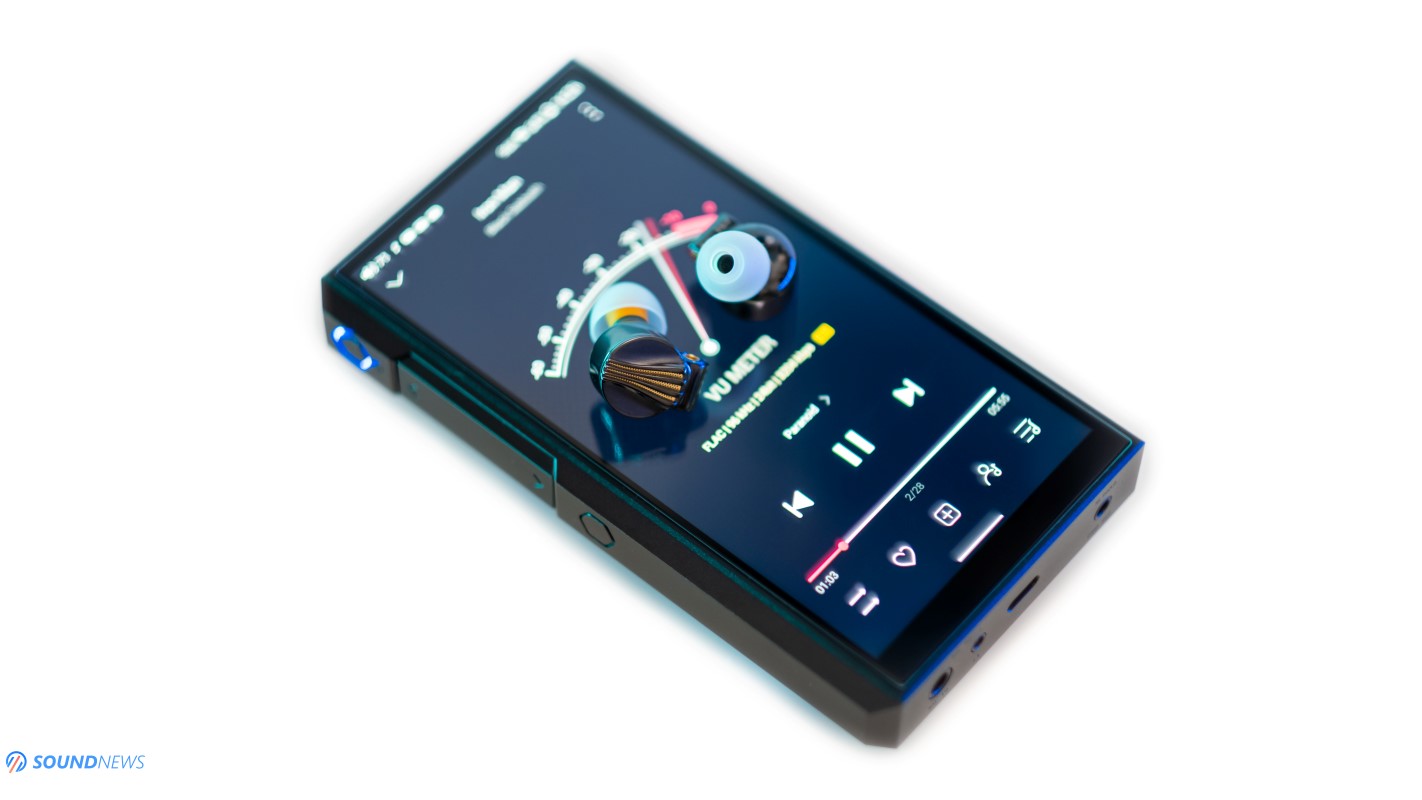
II. Power Requirements
With a sensitivity of 111 dB per 1 single milliwatt of power, FD7 are one of the most sensitive IEMs in my collection, sounding loud and mean as putting Steven Tyler near a microphone. FD7 can be loud even out of ordinary headphone jacks found in usual electronics. Double check your volume on your desktop or portable equipment, as FD7 are quite easy to drive even out of your 4-year-old smartphone. Seriously now, do smartphones still have headphone jacks, I hope they do. Long story short, there was indeed plenty of volume even out of my old smartphone, laptop and table, but obviously I wasn’t getting the same experience I am usually having from dedicated audio devices. They sounded loud but mushy and uncontrolled and you can forget about small details, as ordinary headphone jacks cannot provide them to you. Small USB dongles worked (much) better and finally some technicalities returned home and FD7 sounded as…FD7 and not like a lower tiered IEM. Bluetooth thingies like FiiO’s own BTR5 and Qudelix 5K sounding pretty much identical to a Shanling UA2 wired dongle and I again felt a higher transparency and air in between the notes, driving them fully. If you are one of those dudes that carry a digital audio player around as I do, then low-gain was more than enough to awake dynamics and put more life inside those drivers. FiiO’s M11 Plus and newest Shanling DAPs made them slightly more impactful and meaner sounding to small dongles and Bluetooth gizmos, adding some refinement up top and awakening higher dynamics too, what’s not to like? Probably their price point.
To my surprise desktop electronics didn’t make them considerably better as it was the case with several multi-driver hybrid IEMs. FD7 sounded very similar on desktop headphone amplifiers and they did on the go and trying as hard as I could, I was not capable of making them as mean and as impactful as my daily drivers (FH7) are by default.
Long story short, you don’t need scary looking DAPs, you don’t need portable nuclear reactors to awake nicer dynamics and technicalities, as FD7 sounded great even out of simple USB dongles. The absolute maximum I can recommend is a portable DAP that wouldn’t kill your wallet for good.
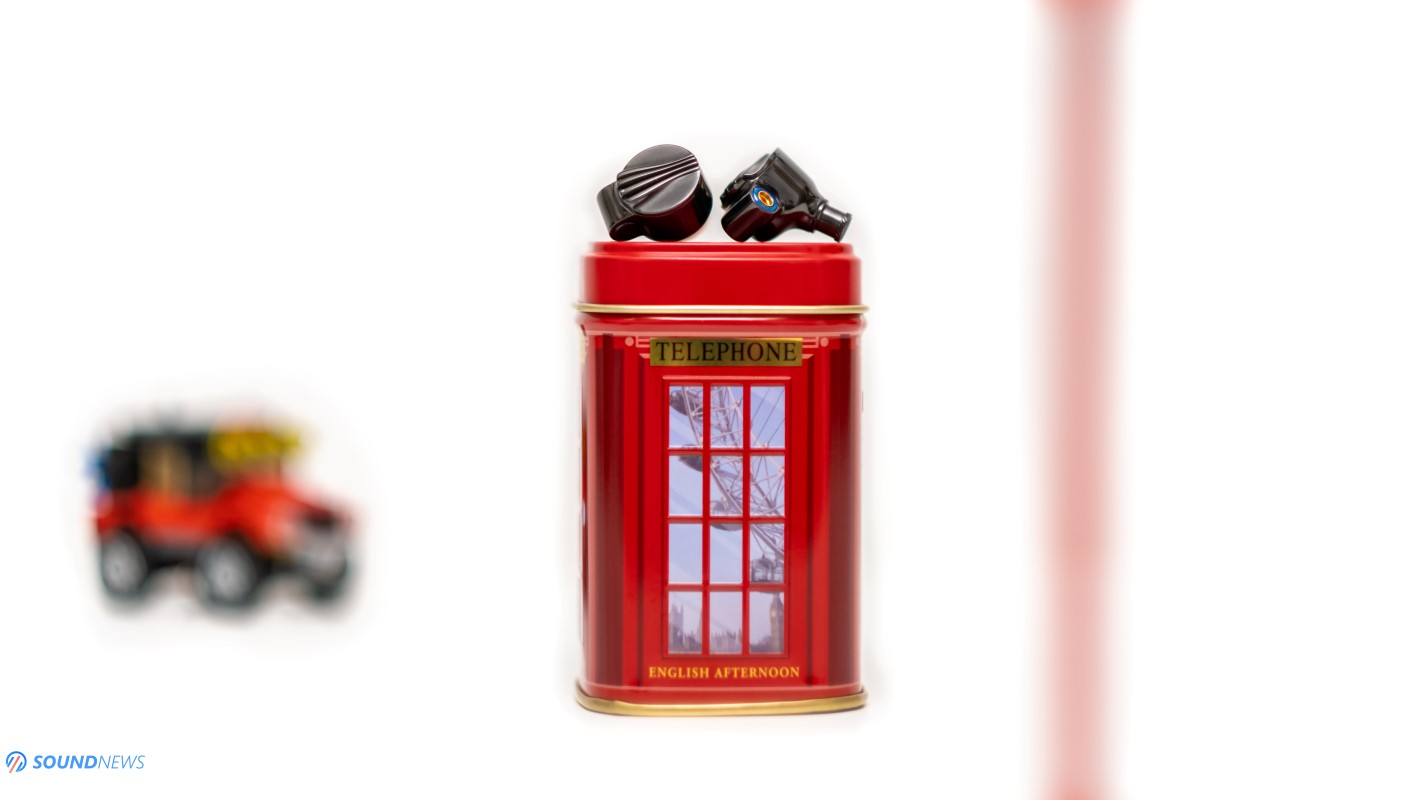
III. Transient Response
Alright folks, I just arrived at the least impressive chapter to write about FD7 and I wish this wouldn’t be the case, but it is as it is. While FD7 are incredibly speedy and very textured, organic and well controlled when crowded music pays me a visit, they aren’t hard slamming in the bass like their hybrid creations are doing. I love when FH7 puts me in between the hammer and the anvil with electronica music and Mjolnir starts hitting me relentlessly, putting a wild smile on my face. FD7 is considerably gentler and less impactful in this regard. All that bass information can be easily heard reaching subterranean 20 Hz notes, but I cannot feel it in my gut, it’s just more ethereal and smoother sounding. Obviously, I’m exaggerating a little, but I cannot deny a relaxing presentation of FD7. You can improve that issue with a fast and impactful DAP or portable DAC/Amp, but it wouldn’t be a night and day difference as it might happen with hybrid IEMs. I still remember when FiiO’s FH7 were connected to a mean sounding Class-A amplifier and my ear lobes starting flapping in the air like Flappy Bird, sadly the same effect is not happening with FD7.
This doesn’t mean that I didn’t enjoy my electronica, rock or metal tunes, not at all, I still liked all that as they hit a home run with its organic tonality, but it wasn’t such a mean and visceral experience as I am getting from my daily drivers. Apart from that mild issue that defines who I am really, FD7 were fast and furious, easily keeping up with the most demanding tunes. Even with clusterfluke™, gentle and Down to Earth™ tunes like Noisia – Tentacles (Qobuz / Tidal), FiiO’s best single driver IEM were pressing gas pedal to the floor, never missing a beat or getting out of control, so there are still plenty of technicalities and things to be impressed by.
There is one last resort that could potentially improve their low-end delivery and that is their interchangeable sound tubes, especially the red ones that were designed to boost their bass delivery. After inserting them and listening for a few tracks, things did indeed changed for the good, but it seems that bass level remains unchanged and its trebles are diminished, so I can easier focus on all other things. Their impact and bass slam improved to a certain degree and I started tapping my feet, a clear sign that things are working the way they are supposed to, but their overall tonal balance shifted and I could no longer hear and feel the upper treble as crisp and detailed as it was before.
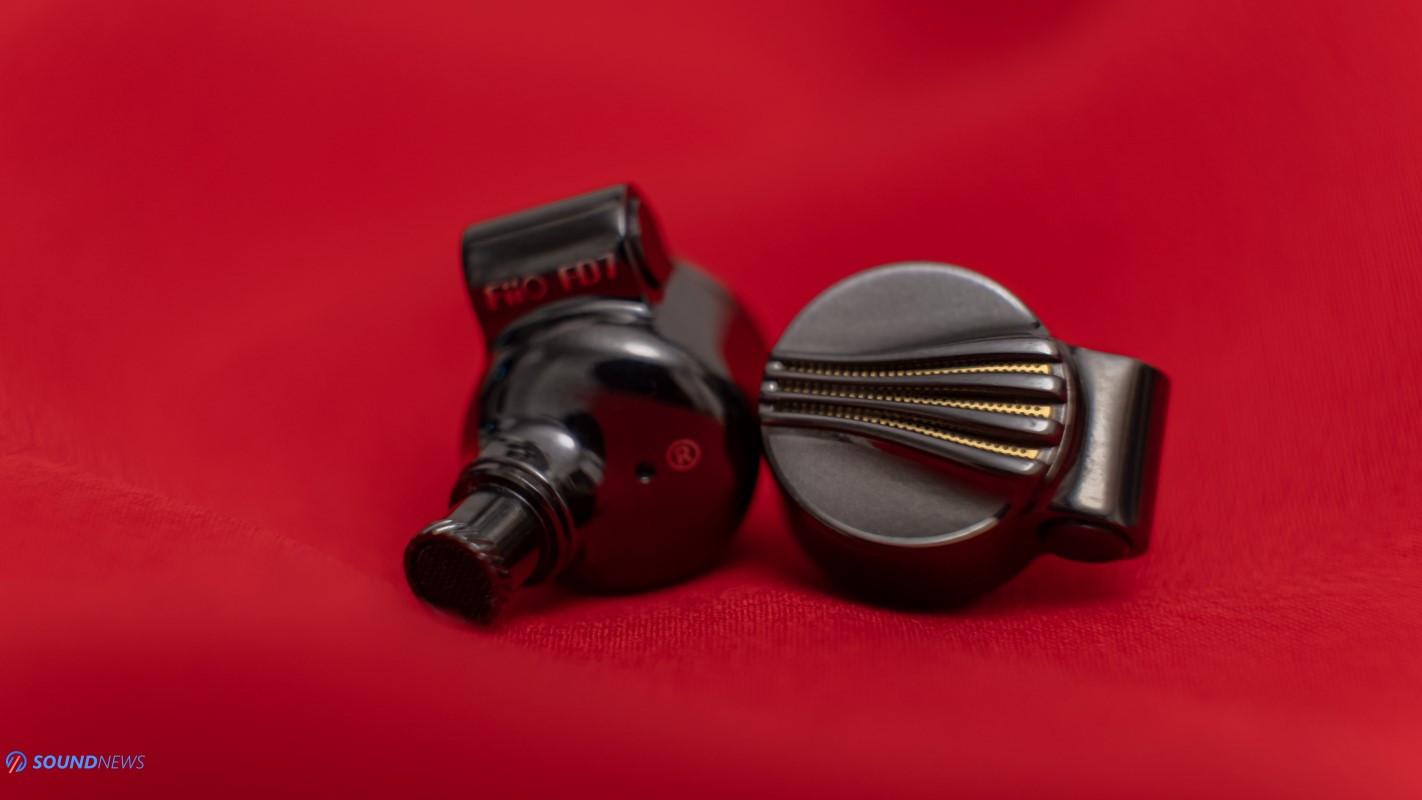
IV. Soundstage & Depth
If transient response was one of their less impressive things to write, it’s the other way when it comes to stage size, imaging and depth. FiiO adopted absolutely the same semi-open acoustic design that was introduced with FD5 and was later embraced by FD7, FDX, FA7S and I hear that FH9 will have it as well. If you look closer, those three lines with golden accents have tiny holes in them so that air could move freely in and out, detensioning the driver and moving unwanted acoustic waves and reverberations that are happening behind its diaphragm outside their shells. Open-back headphones are working by the same principle and the only difference is that FD7 works more like an semi-open IEMs, as these are still passively cancelling some noises coming from the outside. Long story short, FD7 are exactly as open, wide and big sounding as their FD5 and mind you, I’ve called them as soundstage kings and I could easily attribute the same words to the FD7.
These aren’t sounding like typical IEMs, where everything happens in between your grey matter, notes are now flying up in the air, far from your thoughts and daily struggles. FD7 are portraying a bigger picture and that happens even without any kind of burn-in, they sound big from the first second and that was obvious from the start. Everything else made by FiiO doesn’t stand a chance, with the exception of EM5 earbuds that were even airier and bigger sounding.
I could go and on about how impressive FD7 were in terms of scale and I would still use the same words. When live recording made an appearance, I could almost swear that some semi-open desktop headphones like OLLO S4X or Fostex TH909 hopped on my ears, as I could easier multitask around my listening station and FD7 would never try to shove all those things inside my skull and highlight them to me in a very aggressive way. Thanks to their single driver approach, we aren’t dealing with complicated crossovers and multiple sound tubes, everything comes from a single inception point, so everything feels time aligned and I’ve got a clear and very defined picture in front of me. Its imaging that points out every single note around my head is just exceptional, easily challenging semi-open desktop headphones. I could pick-up those notes as cherries from a branch and I didn’t need to stress my mind too much. Depth was layered, delivering music in waves and I could disentangle all that music pretty easily. FD7 is as 3D and enveloping as IEMs could ever sound, at the cost of not blocking as many noises from the outside word. You’ll give some and you’ll receive some, as it happens in real life.
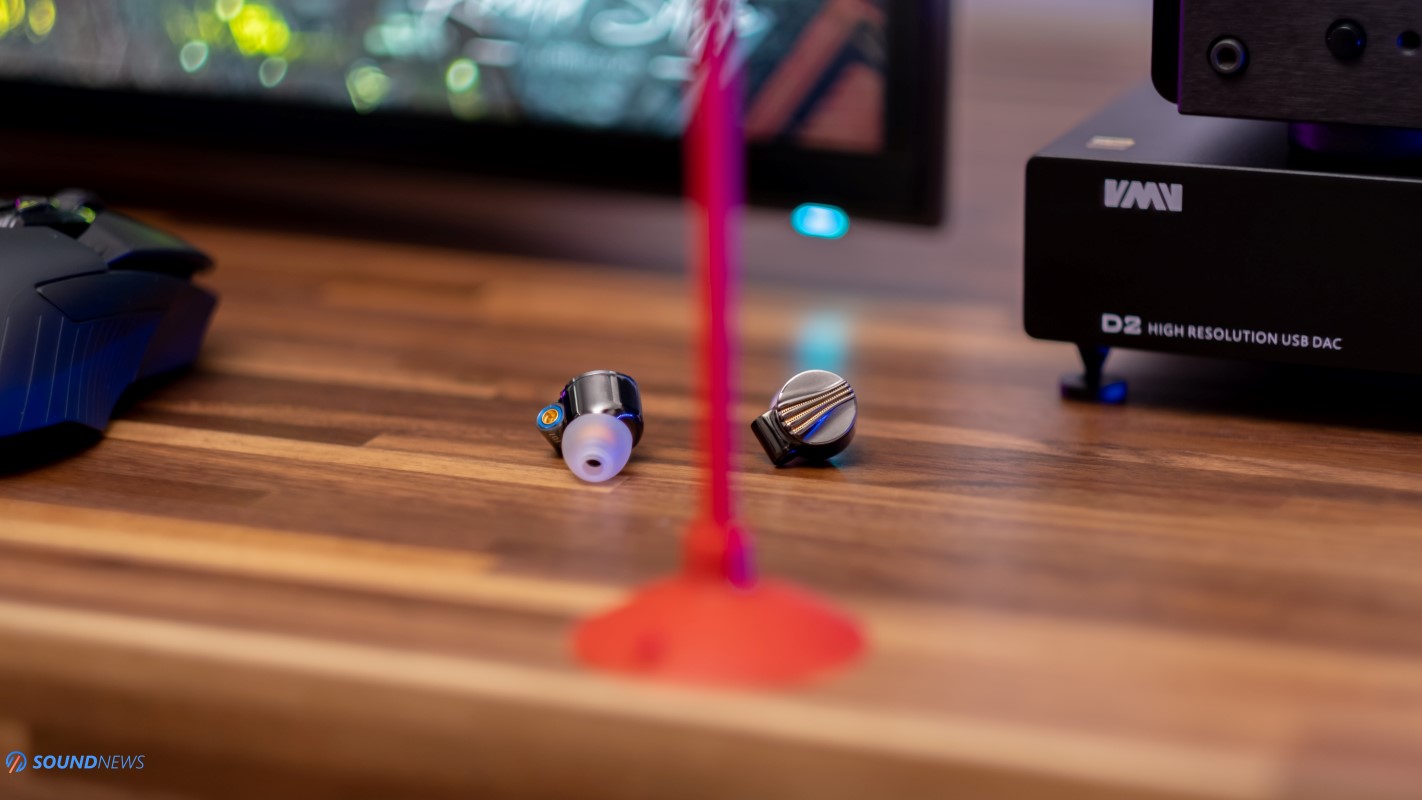
V. Detail Retrieval & Transparency
Removing that Beryllium layer from FD5 and putting a fully-fledged beryllium driver, improved their control at higher volumes, lowering distortion and subsequently increasing the amount of information that is being delivered to us, music lovers. FD5 were already clean, focused and detailed, but FD7 further improves their technicalities, so much so, that I find minor differences between them and my daily drivers FH7 that were mighty impressive in this department. Probably the most impressive feat of FD7 is not how much information is being delivered to the listener, but how it is being provided. FH7 can sometimes be brutal and ruthless in their delivery, almost raw with bad mastered music, while FD7 adds a slight beautifying filter on top, removing grain and leaving only the good parts. FD7 delivers information gentler and more natural, as if listening to real music playing in front of me. There were times when FH7 hybrids felt faster and more impactful to real music, but that is no longer the case with FD7.
These aren’t rushing adrenaline into the blood stream, these are doing it calmer, never making you worry about anything. The higher I am going with volume on my music, the higher I am remaining impressed by them, because distortion is unheard of and they are still tight and controlled sounding. Arriving at 100 dB for a few seconds (to preserve my hearing) didn’t add that armature fart that I am usually getting when trebles are peaking with hybrid or full-armature IEMs. There is less vibration up top and less shimmer, while retaining the same acoustic properties of beryllium that I’ve experienced so many times by now. If you care for all things happening behind your tracks, sleep tight as FD7 will be delivering all that to you in a peaceful and natural way. I’m sure that their linear tuning helped them a lot in this department, as I’m not hearing only bass and treble notes as it usually happens with headphones and IEMs that are following the Harman curve, there is more happening in the middle, as midrange is no longer sucked out and deleted out of existence.
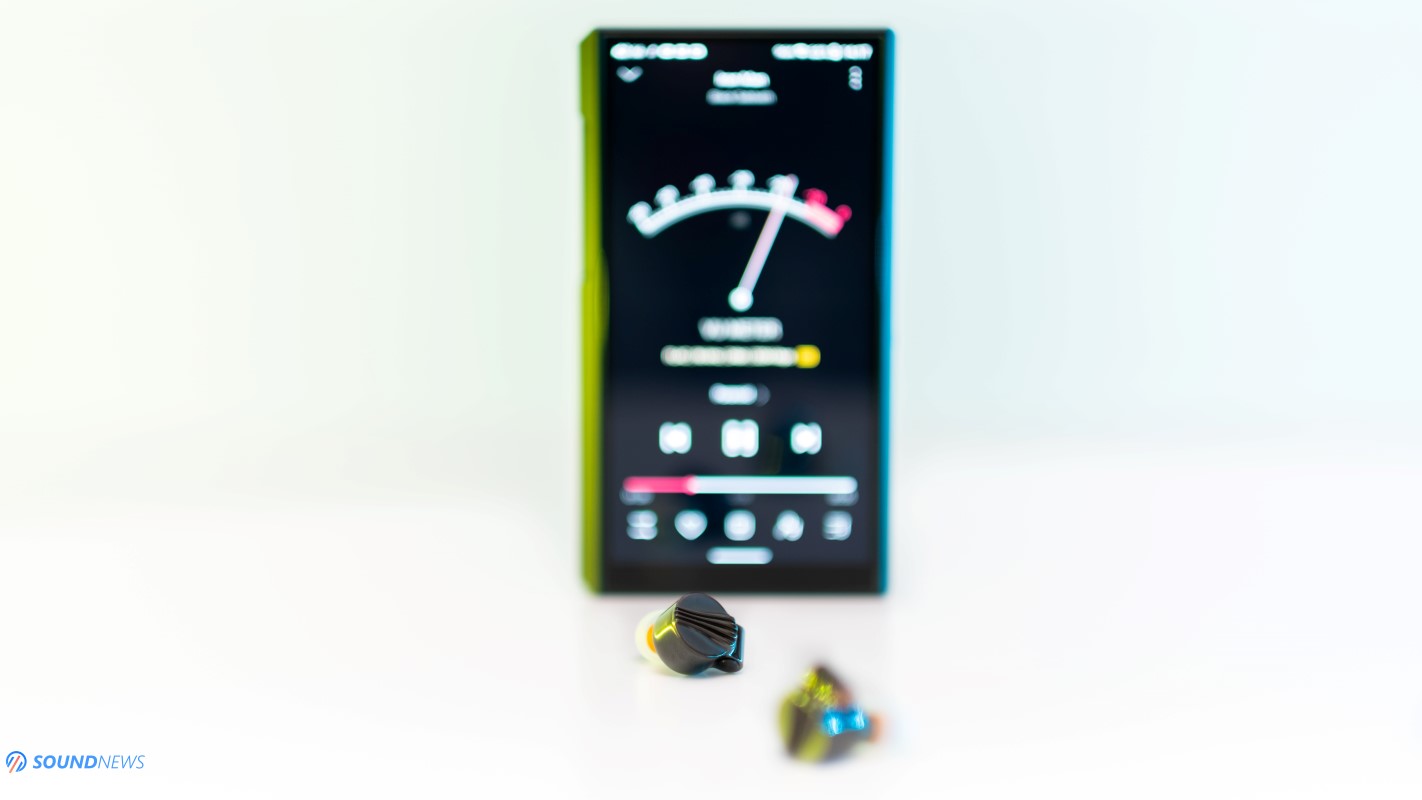
VI. Frequency Response
For this chapter I will remain with the stock (black) sound tubes, as in my opinion these are offering the truest to life experience without boosting or dropping any frequency range.
A. Bass
These have as much bass as you can possibly desire, never dropping or rising a single dB from that region. It starts strong even with 20 Hz and it keeps momentum going way past 200 Hz. Its bass is clean and quite defined, its tightly controlled even at much higher volumes. There are multiple layers to be experienced, it breathes and it comes in waves, again suggesting that I am dealing with a high-quality type of bass. Quantity wise it’s enough, it never drops a single dB anywhere in the back, but it lacks cojones, it isn’t that mean and impactful as their hybrids are delivering. FD7 are using a huge 12 mm driver and the only explanation I can think of is that its diaphragm is reproducing the whole frequency response and not only a small portion as it happens with hybrids, hence dropping a few notches when it comes to slam and impact.
B. Midrange
By far, the biggest jump in terms of tonality/timbre is their midrange region that feels more organic and alive. Finally, males aren’t sounding like females and females aren’t sounding like girls, organ didn’t transform into a pipe and double-bass isn’t a violin anymore. Long story short, there is simply more meat, more weight and substance compared to anything FiiO has done before and trust me, I’ve tried all their IEMs. For the first time I can call their IEMs organic and life-like, it’s much closer to the sound of well-designed planars like those of Audeze and Meze Audio. There is slightly more sweetness and warmth compared to their hybrids and full-armatures, making them much easier to enjoy with music that uses instruments and not switches on a console or clicks on a software program. I can’t call them silky smooth, as Beryllium still has a somewhat metallic texture, but these are getting into that direction, trying to be as natural sounding as possible.
C. Treble
FD7 are strong in the treble, but thankfully not as strong as FD5 that could be bright with some particular music. There is less ringing and less energy compared to those and that makes them easier to enjoy with a bigger collection of music. On very rare occasions these can still drop a brighter note on you, but nothing to be worried about. What’s more interesting is that their red tubes aren’t actually boosting the low-end, but are drastically lowering the treble region by a healthy amount (see graphs below) and in case you find them slightly bright or hard to swallow, just screw those red tubes and disregard that as a long-forgotten dream. Beryllium is a stiff and rigid metal, so you can discard notions as high distortion in the treble as it might happen with plastic or cellulose drivers, but it can sometimes add a metallic flair to your music. For example, cymbals sounded more organic compared to armature-based trebles, but it wasn’t as organic as it was on cellulose drivers. Beryllium was a huge problem solver and I am really glad seeing it in here, but a few (unwanted) characteristics still carried over.

VII. Detailed Measurements
Alright folks, let’s run a full set of measurements and see how they perform. When it comes to measurements, my best friend is still the Benchmark HPA4 as it is as linear as headphone amplifiers could ever be and I resumed at using the Singxer SDA-6 PRO or the SMSl VMV D2 as the main DACs for this job. The measurement rig was the MiniDSP E.A.R.S. calibrated with IDF (IEM Diffuse Field) compensation files. Do note that MiniDSP E.A.R.S. is not following any IEC standards, meaning that my readings can’t be used as reference measurements. I’m doing them just to get a general idea about their sound signature.
I’ve measured them only by using the memory foam ear-tips. I’ve used double-flanged ear-tips only with their red sound tube, as others aren’t working with such a thin nozzle. I’ve measured them more than 10 times, as finding a perfect fit and a complete seal was quite a challenge.
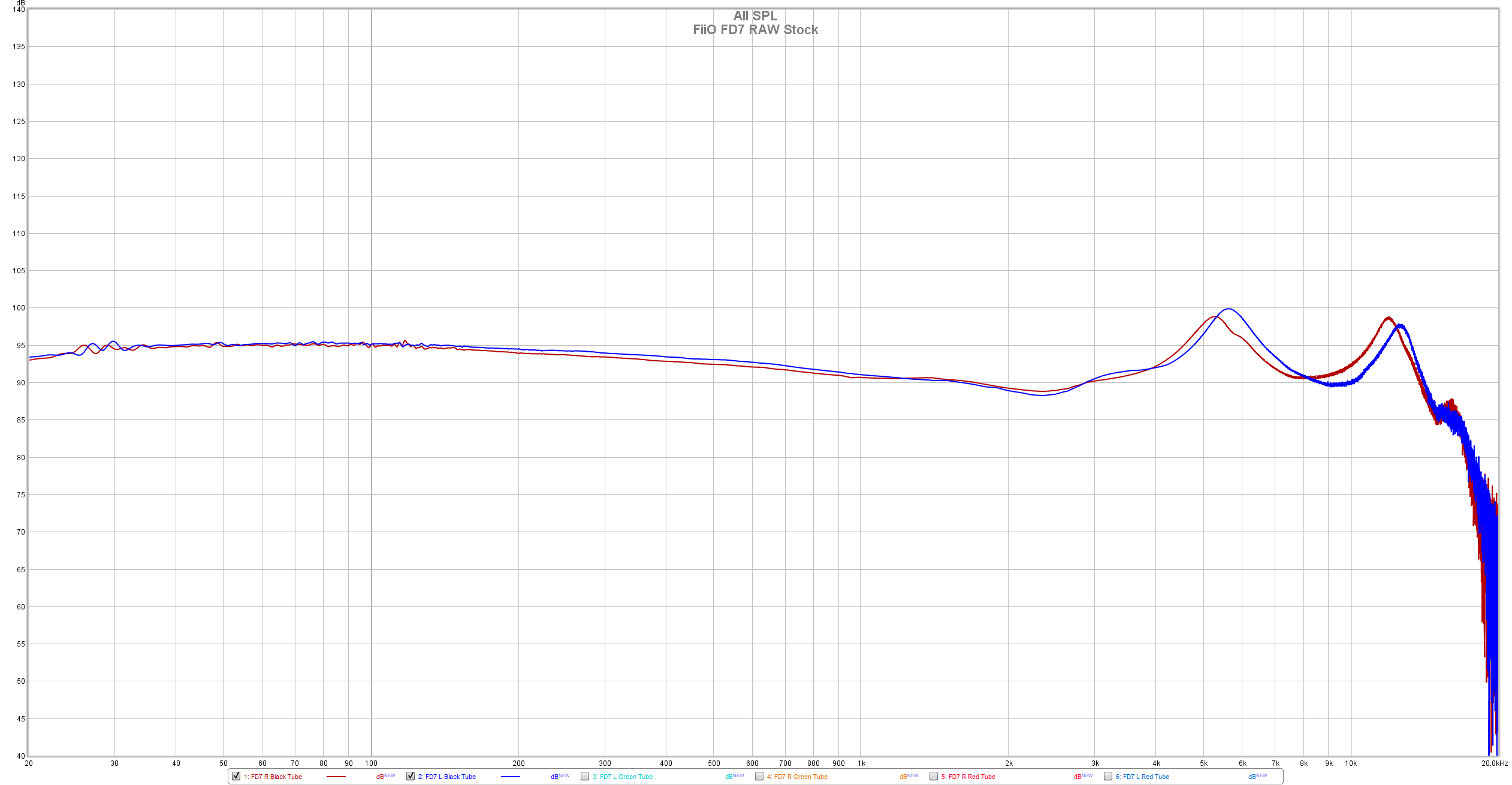
This is their RAW FR measurement and as you can see, their driver matching is great, there is only a small deviation in the treble, which I couldn’t hear in a real-life scenario. I have re-inserted them several times and I’ve got exactly the same set of measurements with their memory-foam tips.
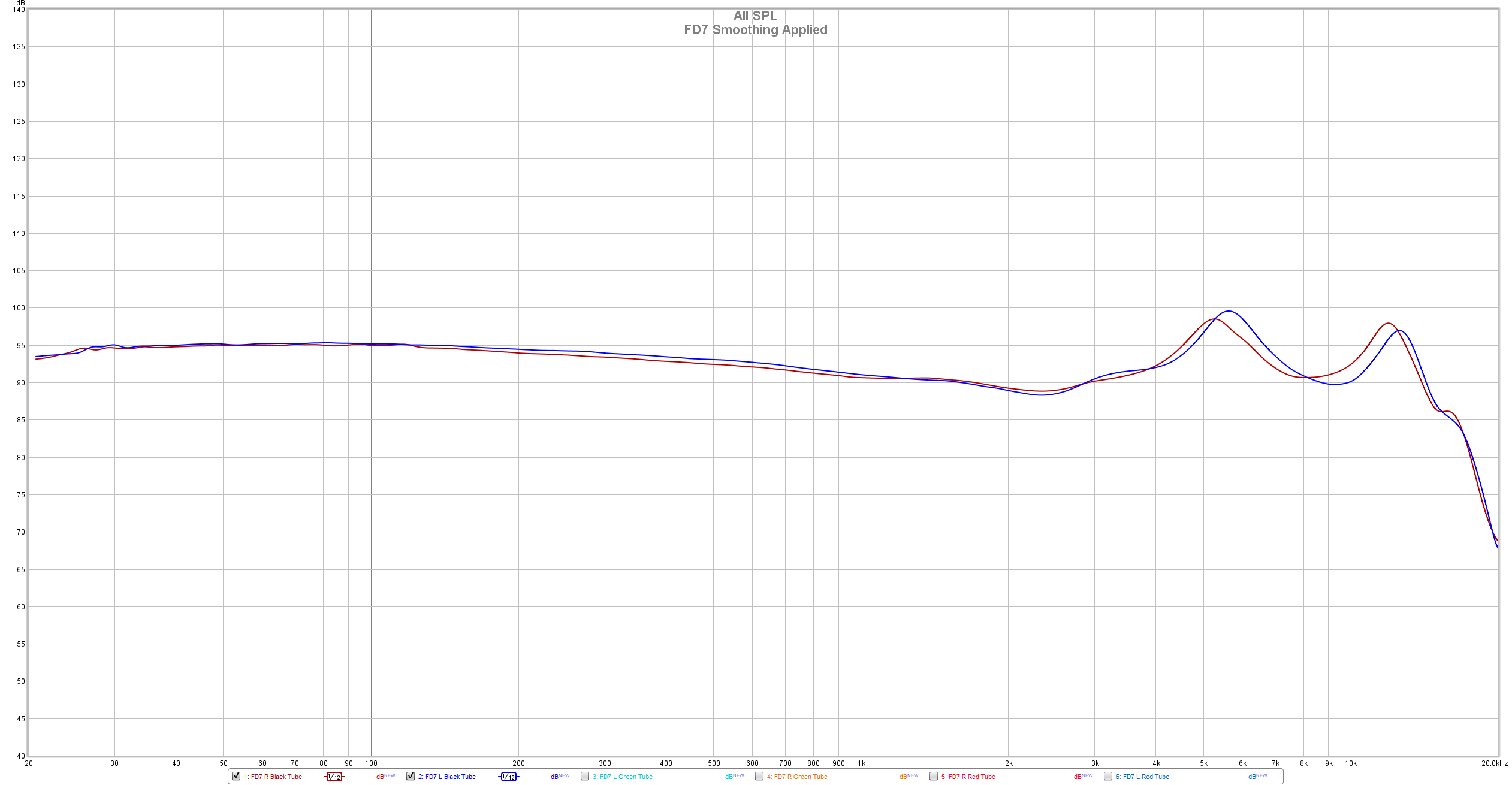
Applying a 1/12 smoothing, you can see their treble performance with a higher accuracy. Notice their impressive bass performance starting with 20 Hz and going all the way up to 800 Hz where things are getting less intensive. Their FR reading is impressive, it’s linear until treble is being reached. Treble is elevated by several dB at 5 kHz and then at 12 kHz, but only by 3 dB (compared to 7 dB on FD5) which isn’t a bad thing altogether.
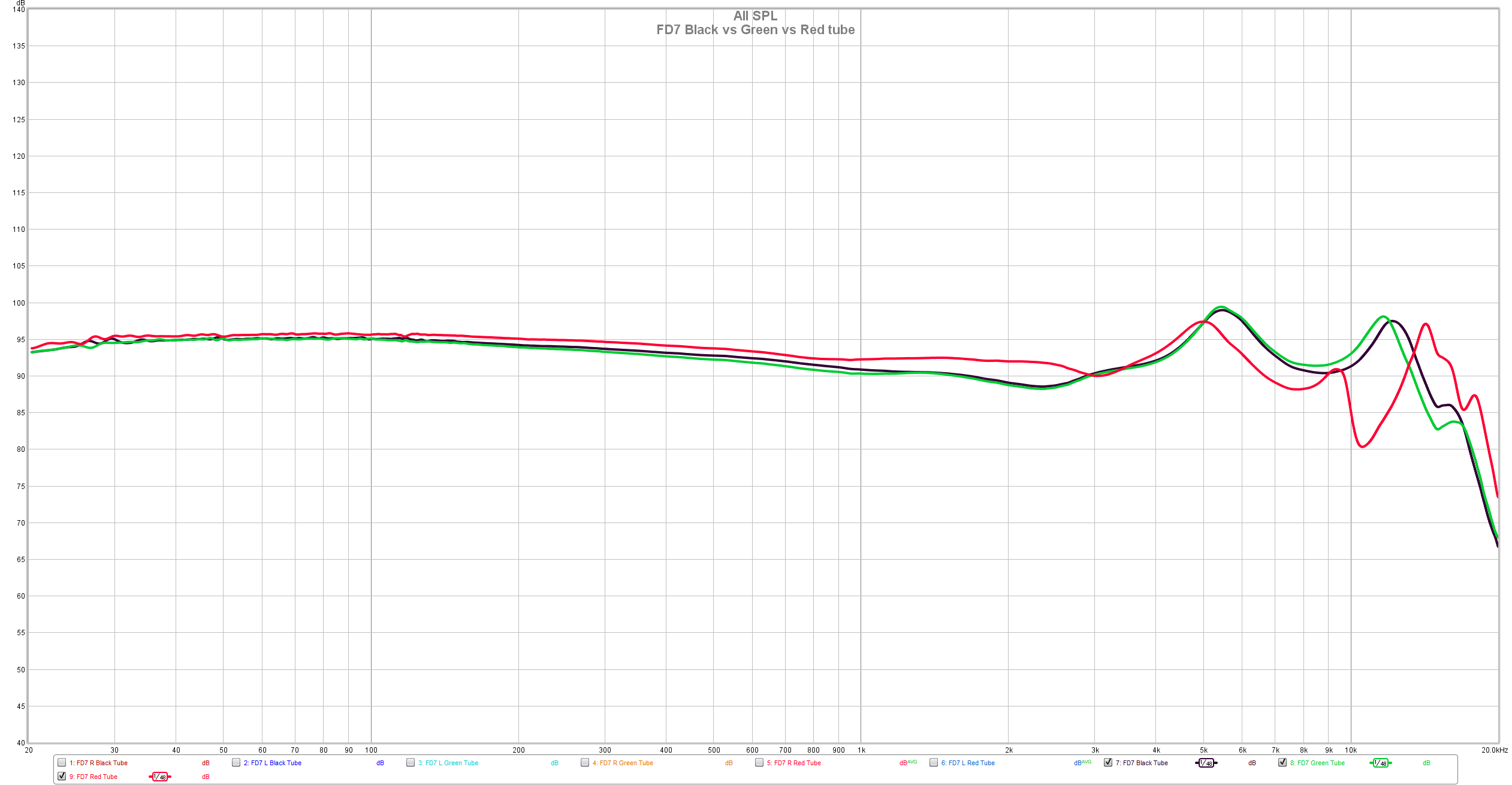
If you are curious how their sound tubes are altering the FR, please take a look at this reading. There is almost no difference between black and green tubes and quite a substantial one with the red tubes.
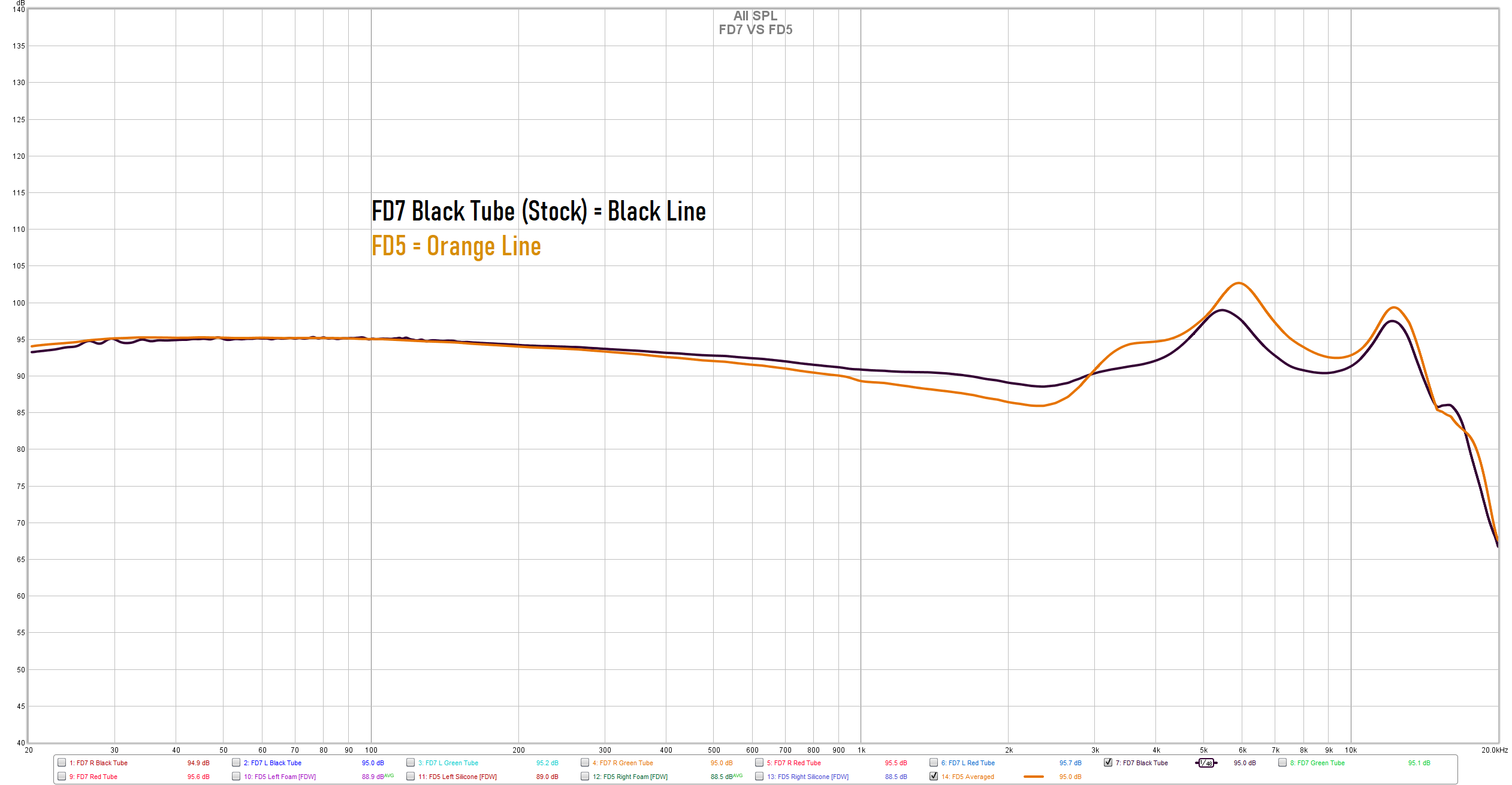
If you wondering how FD7 stacks against their FD5 IEMs, here is another graph that will tell you more. It is clear to me that FD5 is thinner in the midrange and brighter in the treble, which wasn’t really the case with FD7.
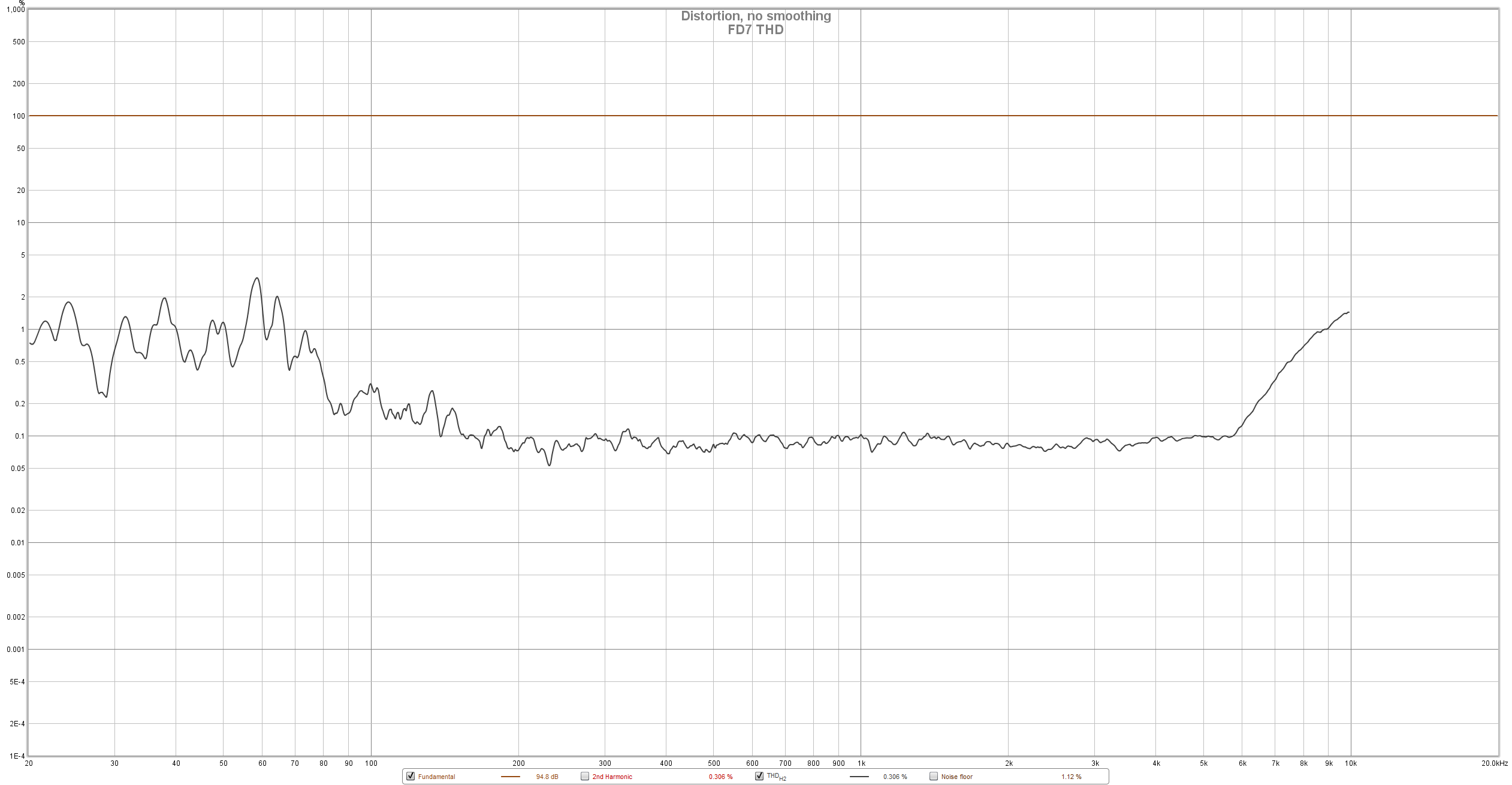
Their Total Harmonic Distortion (THD) reading is great, but not exactly impressive. It sits at 0.306% for the most part and can reach as high as 2% in the bass. Considering that I’m dealing with a single dynamic driver, I don’t think it can get a lot better than this. Their hybrids and full-armature IEMs have it higher.
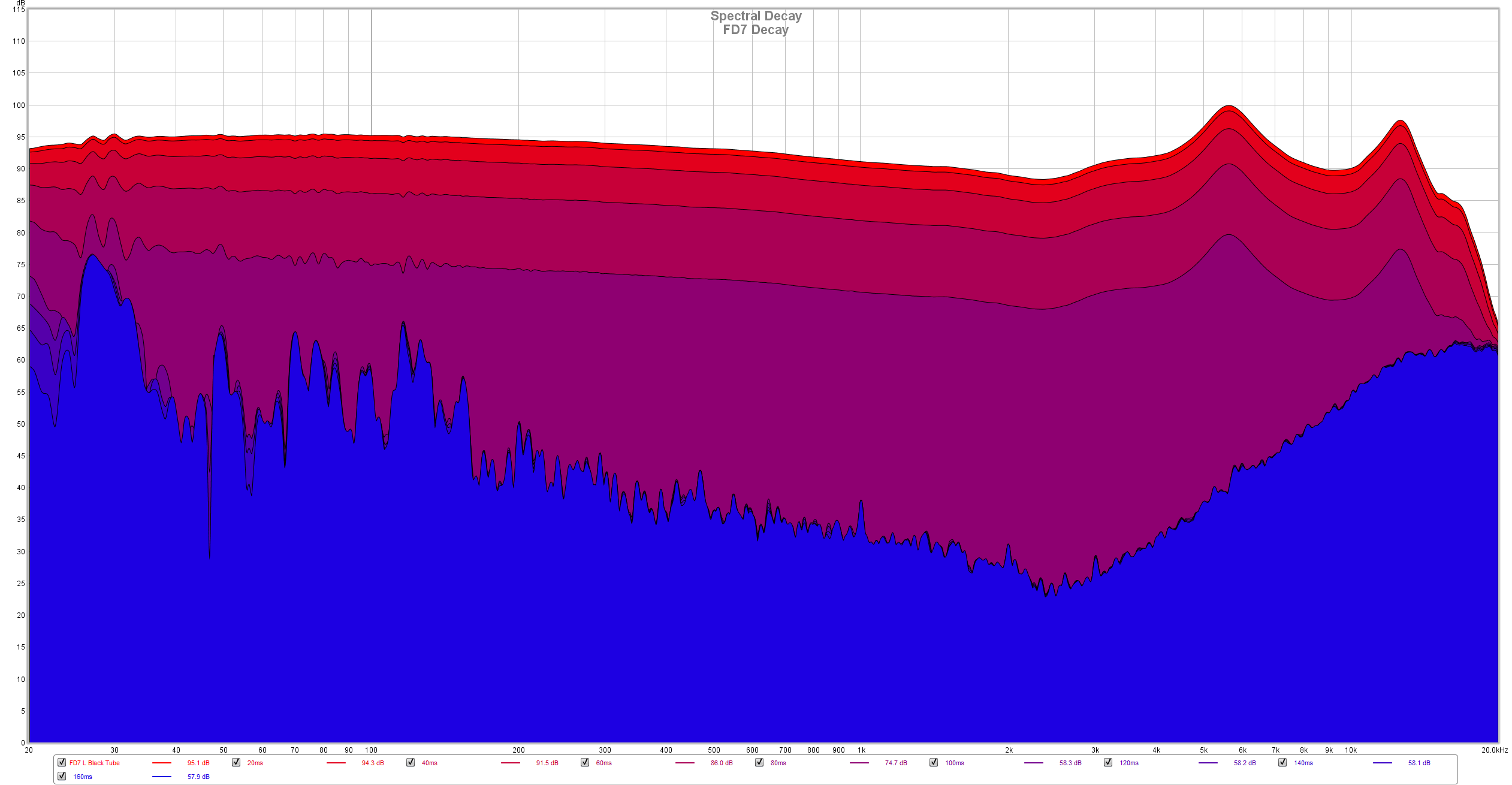
Their spectral decay is looking okay, but I wish these would be faster sounding in the bass, it seems to be lagging behind just a little compared to the rest of the FR.
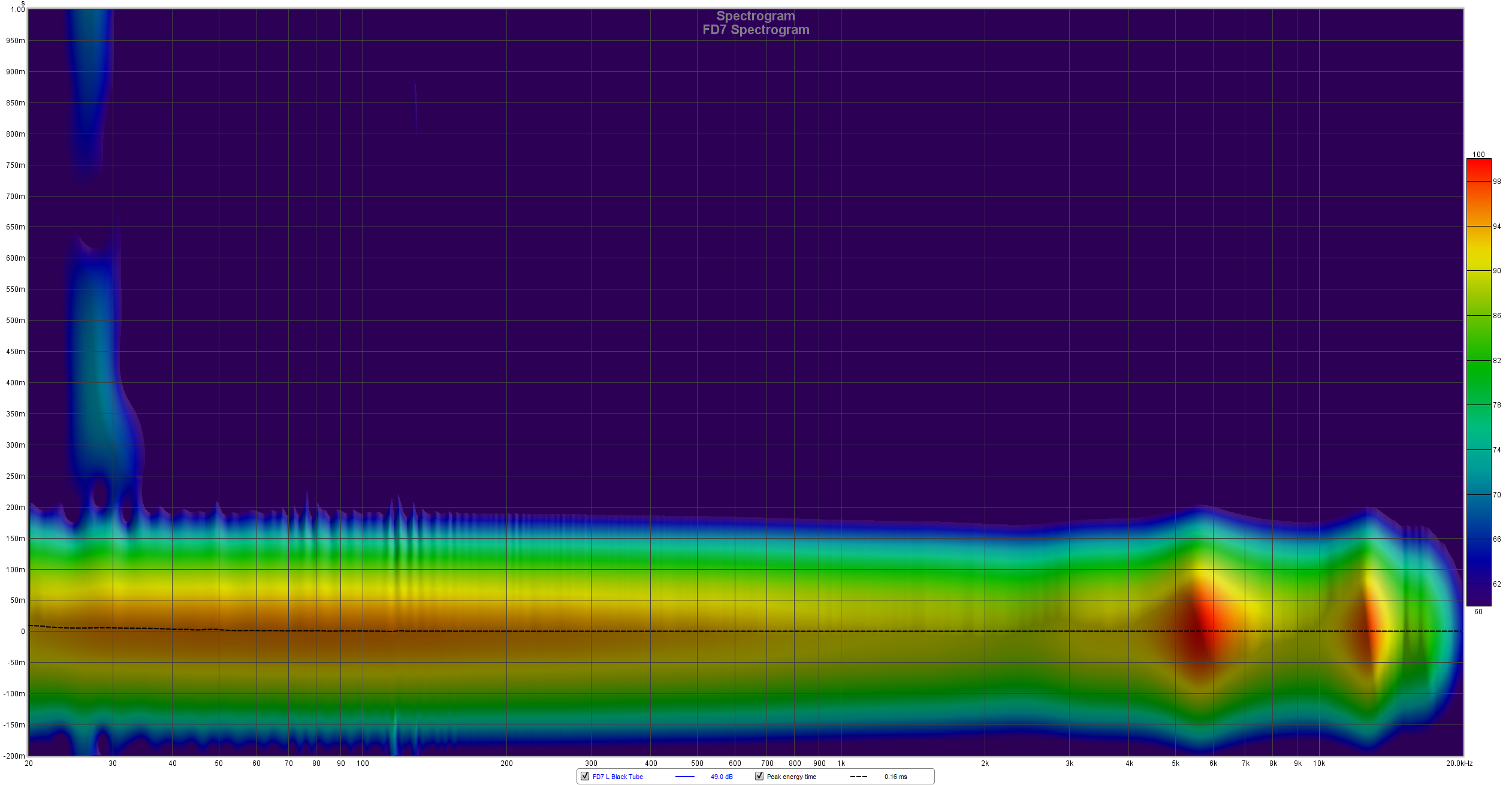
Spectrogram is clean for the most part, but shows a minor ringing happening around 30 Hz, knowing their struggle with the bass region, it isn’t unusual seeing a higher ringing in there.
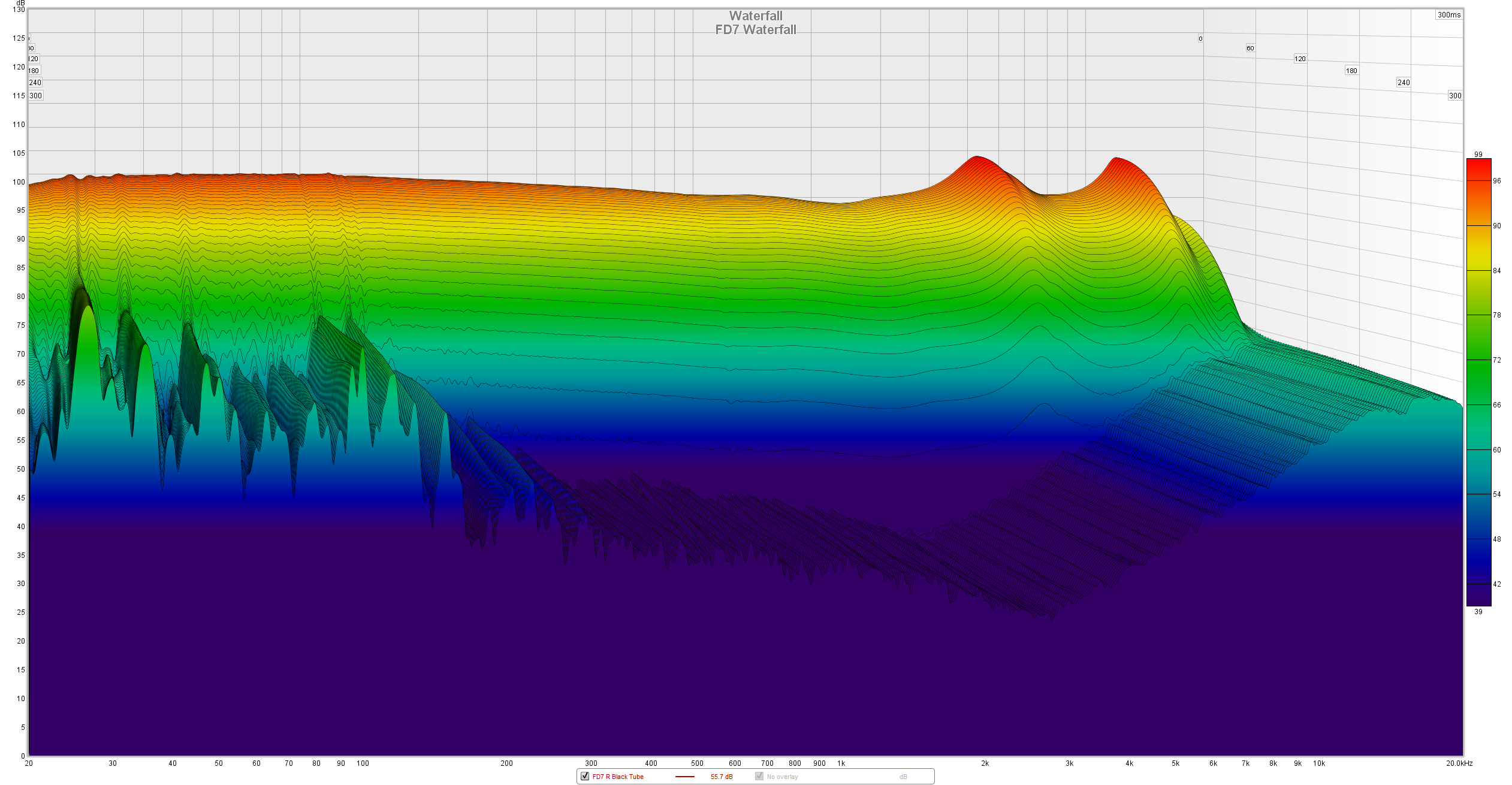
Their waterfall looks smooth and gentle, it looks better to that of FD5 and it if that treble is bothering you, tame it with a slight EQ or with their red sound tube.
Overall, I’ve recorded an amazing frequency response, quite possible the best for FiiO IEMs and they seem to improve every possible aspect of FD5.
VII. A Must-Read Comparison
FiiO FD7 ($599) VS FiiO FH7 ($449)

When I’ve received the FD7 I thought to myself that this Is It. These will be replacing my daily driver FH7 and I can finally retire them, as everything seem to point towards a higher performance sound, let’s check if that is really the case.
In terms of accessories and packaging, both units are more alike than different, as FiiO added in there plenty of ear-tips to choose from, leather carry cases and amazing detachable cables. Both have interchangeable sound filters and you can tune either of them to your liking, but there are more ear-tips on FD7 (16 pairs on FD7 versus 15 pairs on FH7) and the biggest difference lies in the cable itself. There is a single ended cable terminated with a 3.5mm jack on FH7, while FD7 uses higher quality conductors (pure silver) and lets you chose three different connectors: 3.5mm SE, 2.5mm BAL and 4.4mm BAL. All in all, FD7 offers a nicer packaging and a higher selection of accessories, hence costing a little bit more.
Sound wise, if I would never compare them, I would never call FH7 as fake sounding or carrying a slight metallic texture, but that is certainly the case when comparing both models. FH7 are providing a weirder treble, it is both hotter by a little and slightly unnatural since it is being reproduced by metallic armature drivers. Bells and cymbals felt more natural and much closer to a real-life performance on FD7, while all that felt brighter and less organic on FH7 hybrids. An immediate change was in terms of sound staging capabilities of both models. While listening to Yonder by Klone (Qobuz / Tidal), FD7 plays back perfectly that initial echo, there is a longer decay and longer vibration of vocal cords, FD7 sounded much closer to what I am getting from a well-driven planar headphone. Soundstage felt wider, deeper and more open sounding on FD7 pushing notes around my head, while FH7 pushed all that information inside it, sounding more like a typical IEM, while FD7 closer to a semi-open desktop headphone. In a silent listening spot, the difference is quite big and I could easier immerse myself with FD7, follow music’s trail and dive deeper into well mastered music.
The whole frequency response felt more complete on FD7 and a bit uneven on FH7, especially when it comes to treble, putting a metallic tint all over it. Detail retrieval, transparency, timing and control was by a hair more impressive on FD7 as you can’t beat a no crossover design that fires everything from a single inception point. By comparison, FH7 felt a little crude, raw and unpolished, less focused in a way and much closer sounding. It seems that FD7 won on all key aspects, except for one and that is bass slam and impact, where FH7 felt by two notches more impressive. After putting memory-foam tips and red tubes on the FD7 things improved, but still these were lagging behind, never having that ballsy attitude of FH7.
As much as I like the FH7 for their final kick, I simply cannot overlook how bigger and more natural FD7 sounded by comparison, it’s a different sound in every possible way, trying bringing you closer to your music. As of right now, I believe their price point was fully justified, but I can get it if FH7 is still more appealing to you. If you listening to everything starting with classical and finishing with metal plus everything in between, then FD7 looks like a better all-around IEM and if are mostly into modern and impactful music, then FH7 could be more interesting and appealing to you.

My Conclusion
I’m glad that FiiO beautifully labeled their IEMs, splitting them in three important categories: FA (FiiO Armature), FH (FiiO Hybrid) and FD (FiiO Dynamic) that are catering to different audiophiles. FD7 is so far the highest performing single driver IEM of FiiO and it’s also the most natural and organic sounding IEM that FiiO has ever done. In many ways, FD7 is their best IEM yet, as I didn’t experience such a cohesive and full-bodied sounding IEM before, while pushing all the notes outside my head, reminding more about semi-open desktop headphones. I know that many people enjoy the sound of planar magnetic headphones for their openness, tactility, texture and naturalness and for those people that can’t leave that sound at home, FD7 provides a similar sound on the go in a much smaller package.
There aren’t many things to dislike about FD7, the only part that could be improved upon is their bass impact that felt good but not outstanding and considering all their pros and cons, I believe that a Silver Award was fully justified.

I tried nitpicking more, but this is where my complaints stopped and music started playing and even if $599 doesn’t sound like peanuts money, I believe their price was fully justified and it’s my pleasure recommending such a natural sounding IEM. FD7 were kindly provided by FiiO, you can purchase them from their AliExpress Store, you can get them from their worldwide distributors right here. In case you get a pair, leave some feedback below and let me know how they are treating you. Until next time my friends! Signing out.
PROS:
- An excellent unboxing experience and a wide selection of accessories
- A single cable to rule them all, those swappable plugs priceless and its pure-silver conductors can’t get any better
- A small and compact shell, that isn’t applying much pressure to your ear canal
- Build quality seems to be top-notch, a stainless-steel body should resist a lot of abuse
- Very easy to drive
- One of the most extended frequency responses I’ve measured with IEMs
- Harman Target Curve is no more!
- Excellent timing and control, very cohesive sounding
- There is naturalness, sweetness and a lot of meat on the bone
- Bass is tightly controlled; it goes deep and it is being maintained
- Extended treble region, without being a burden in long listening sessions
- A vast soundstage that stretches wide in all directions
- Highly detailed and clean sounding, while removing grain and hiccups
- A richer tonality to anything they’ve done before
- Excellent set of measurements
- A justified price
CONS:
- A nicer bass impact would be nice to have
- A slight metallic texture in the treble (on very rare occasions)
ASSOCIATED EQUIPMENT:
- DACs: Audiobyte HydraVox & HydraZap, Musician Aquarius & Draco, Matrix Audio Element X, Gold Note DS-10 Plus & PSU-10 EVO, SMSL VMV D2, Singxer SDA-6 PRO, Gustard X16
- DAPs: FiiO M11 Plus LTD, M15, Shanling M6 V.21, M3X
- Headphone Amps: Flux Lab Acoustics Volot, Benchmark HPA4, Burson Soloist 3X, Musician Andromeda, Gustard H16
- Preamps: Musician Monoceros, Benchmark HPA4, Topping PRE90
- Power Amplifiers: Benchmark AHB2 (x2), KECES S300, SMSL SA400, Burson Timekeeper 3i
- Integrated Amplifiers: KECES E40, Burson Timekeeper 3i
- Loudspeakers: KEF Reference 3, Sound of Eden Crescendo UNO, Natural Sound NS17
- IEMs: FiiO FD7, FD5, FH7, FH5S, Meze Rai Penta, Rai Solo, LittleDot Cu KIS, Hiby Crystal 6, IKKO OH10, Moondrop KATO, 7Hz Timeless & others
- Portable headphones: Sennheiser Momentum 2, Meze 99 Classics, Sony WH1000-XM4
- Full-sized headphones: Hifiman Susvara, HE1000SE, Arya Stealth, HE400SE, Audeze LCD-4, LCD-X, Erzetich Phobos 2021, Phobos V2018, Mania, Kennerton Wodan, Magni, Gjallarhorn, Vali, M12S, Ollo S4X Reference, Apos Caspian, Sendy Peacock & Aiva
- Interconnects: QED Reference (x2), Topping TCX1 (x2)
- Speaker cables: Kimber PR8, Audioquest Type4
- Power Cables: Isotek EVO3 Premier (x3)
- Balanced Isolation Power Conditioners: PLiXiR Elite BAC1500 (stereo setup), Elite BAC400 (headphone setup)
